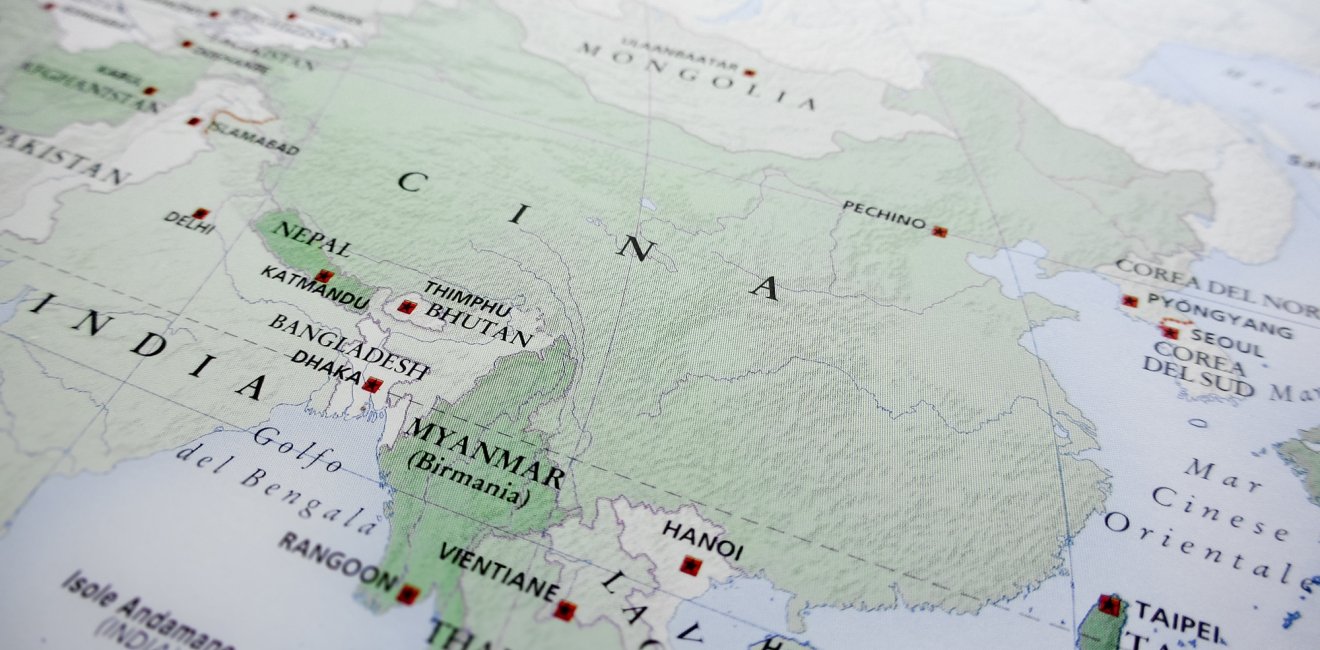
A blog of the Indo-Pacific Program
Southeast Asia is at the center of the two major geopolitical challenges of the 21st century: climate change and the rise of China. As decision-makers across the region grow increasingly concerned about climate change and environmental degradation, as well as the implications of intensifying competition between China and the United States, Washington has an opportunity to strengthen its engagement with Southeast Asia and advance its broader geopolitical objectives.
Just as Southeast Asia’s economies are poised to make rapid and profound advancements in the coming decades, the region faces increasing frequent and severe floods, droughts, heat, and typhoons generated by climate change. According to the Internal Displacement Monitoring Center, more than 32 million people in Southeast Asia were displaced by weather-related natural disasters between 2015 and 2019. And things will get worse over time—according to a recent report by the McKinsey Global Institute, between 8 and 13 percent of annual GDP could be at risk due to rising heat and humidity by 2050. As noted by David Dennis at CSIS, 2050 will also see about 48 million people living with floods from high tides, while predicted average annual flood levels will inundate the homes of over 79 million people. The 50 to 70 centimeter rise in sea levels that will result from an average global temperature increase to 2.4°C by the end of the century will threaten the 77 percent of Southeast Asians who live in coastal or low lying river deltas. These disasters—and their attendant impact on food and water security, disease, and displaced peoples—will have profound implications for regional stability.
As Southeast Asia’s economies grow larger and its populations consume more, however, carbon emissions from the region are expected to increase rapidly.
Southeast Asia has not been one of the main contributors to global climate change, but that may change. According to the International Energy Agency, in 2018 China produced over 28 percent of global CO2 emissions, while the United States produced over 14 percent and India produced just over 7 percent. Together, the ten ASEAN countries in 2018 produced just over 4 percent—about half of which came from Indonesia and Vietnam and was largely derived from electricity and heat production, as well as the transportation sector. As Southeast Asia’s economies grow larger and its populations consume more, however, carbon emissions from the region are expected to increase rapidly. For example, Southeast Asia’s growth in electricity demand is among the fastest in the world, and is expected to add the equivalent of Japan’s entire energy system to global demand over the next two decades, according to IEA Executive Director Fatih Birol.
Several countries in Southeast Asia have identified climate change mitigation and adaptation as top priorities, but such efforts are constrained by poor governance, limited resources, and other priorities. And as difficult as these challenges are to address on their own, they are further complicated by the region’s complex and difficult geopolitics. ASEAN’s reliance on consensus-based decision-making norms allow geopolitical splits to slow and stymie progress and cooperation on a range of issues. This is especially true when it involves competing priorities and influence between China and the United States. Southeast Asia has already emerged as a central area of U.S.-China competition for influence and access, and climate action will likely be pulled into that broader dynamic. This is where the United States has distinct advantages, if it can act on them.
Southeast Asia is in dire need of modern infrastructure. According to the Asian Development Bank, the region would need $2.7 trillion in infrastructure investment between 2016 and 2030 just to meet the demands of its rapidly rising population. While China has sought to meet this demand with its Belt and Road Initiative, it has encountered widespread problems related to the quality and reliability of its construction, the potential environmental impacts, and the political and fiscal implications of its investments.
The United States can fill this gap by expanding its capacity to finance infrastructure development, emphasizing green technologies and energy efficiencies, and partnering with like-minded nations.
The United States can fill this gap by expanding its capacity to finance infrastructure development, emphasizing green technologies and energy efficiencies, and partnering with like-minded nations. A major first step in this direction would be to establish an annual U.S.-ASEAN Climate Dialogue, driven by Special Envoy John Kerry, that provides opportunities to partner on climate responses in Southeast Asia. The United States could also establish an office of the International Development Finance Corporation (IDFC) to directly engage with ASEAN and its member nations and facilitate greater U.S. investment in Southeast Asia. Finally, the United States could lead the Quad mechanism (including the United States, Australia, India, and Japan) to coordinate climate- and energy-related investments and governance initiatives, similar to the kind of Quad-driven cooperation that was recently announced to supply at least 1 billion COVID-19 vaccinations to Southeast Asia by the end of 2022.
The countries of Southeast Asia are especially sensitive to the state of relations between the United States and China, with many growing nervous if relations between Washington and Beijing appear to be growing overly close or excessively hostile. There is rarely a happy medium to be found in which anxieties about the state of major power relations are not prevalent, and rising challenges in Southeast Asia are likely to be another area of U.S.-China competition in the region. While the nations of Southeast Asia are not likely to align with Beijing or Washington over climate change issues, the United States has a significant opportunity to build goodwill, expand its influence, and address a major potential driver of regional suffering and instability.
--------
The views expressed are those of the author alone, and do not represent those of the Wilson Center or the U.S. Government.
Author


Indo-Pacific Program
The Indo-Pacific Program promotes policy debate and intellectual discussions on US interests in the Asia-Pacific as well as political, economic, security, and social issues relating to the world’s most populous and economically dynamic region. Read more





